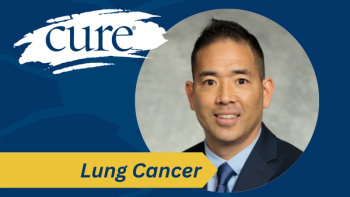
Lingering Stress After Follicular Lymphoma Remission is a Challenge
Key Takeaways
- Cancer diagnosis and treatment significantly increase stress levels, which can persist even after achieving remission.
- Regular follow-ups with oncologists are essential for monitoring but also serve as reminders of the ongoing risk of relapse.
Four years after remission from follicular lymphoma, ongoing fear of relapse, lingering symptoms, and life stressors continue to weigh heavily on me.
Everyone has stress in their lives. For people dealing with cancer, that’s an added stressor that can tip things right over the edge. When I was first diagnosed with follicular lymphoma, a chronic and incurable — but very treatable form of blood cancer — in July 2020, my stress level went through the roof.
My stress level dropped through the treatment process but ramped back up near the end because I had been so focused on getting through treatment that I wasn’t sure what to do next; the energy that had sustained me through the process fell off and left me with nothing. The social worker at the oncology center was very helpful with that — but no longer available now; first, the one I worked with retired, and second, the person is there to help patients deal with treatment, not with the stresses of life in general.
I finished treatment in December 2020 —over four years ago now. Then I had another year of maintenance treatments — where my cancer treatment was a chemotherapy drug and an immunotherapy drug given on two consecutive days every four weeks (the chemotherapy drug both days, and the immunotherapy drug only on the first day); maintenance was the immunotherapy drug only, given every eight weeks; that finished about three years ago.
It was about four years ago, December 23, 2020, that I was officially declared to be NED (No Evidence of Disease — a clinical term for in remission).
Like most patients in remission, I still see my oncologist regularly. At this point in time, I see him twice a year, both times with blood work, and once a year with a CT scan. He always asks if I’ve had any symptoms, and sometimes it’s hard to know. One of my primary symptoms was fatigue, leading to significant sleepiness in the afternoon, and often an irresistible urge to nap (it was summer, I was a teacher, and it was very hot, so I didn’t think much of it at the time).
This is a tricky symptom to track — not because I don’t get sleepy some days, but because there are so many reasons it can happen. At 58, sometimes I just don’t sleep well — but oddly, the day after I don’t sleep well is rarely the day I feel daytime sleepiness; it’s often the day after that, no matter how well I slept on the intervening night. Determining if my sleepiness is due to illness, poor sleep, overexertion, or the dreaded relapse is a stressor that I could really do without — but it exists, and there’s nothing I can do to change that. The risk of relapse is 2 to 3% a year — less than four years after treatment, but still higher than someone who’s never developed it, and I can’t forget that. The stress of that concern by itself can cause sleeplessness, which creates an ongoing cycle of daytime sleepiness, which is then compounded by stress, and so on.
This is added to the stress of life in general — all the stressors that everyone experiences. Those who have chronic health conditions — cancer or otherwise — generally understand, but those who don’t often ask why I worry about it after “so long”; after all, it’s been four years, it hasn’t come back, why would I worry?
But — like cancer patients everywhere — I know that the risk of relapse, or of some other form of cancer triggered by treatment, is higher for me than for anyone who’s never been treated for cancer. This is, of course, why cancer survivors are monitored, effectively, forever. The time between checks gets greater over time, but it never really goes away forever — and that’s a stressor in itself.
For more news on cancer updates, research and education, don’t forget to





